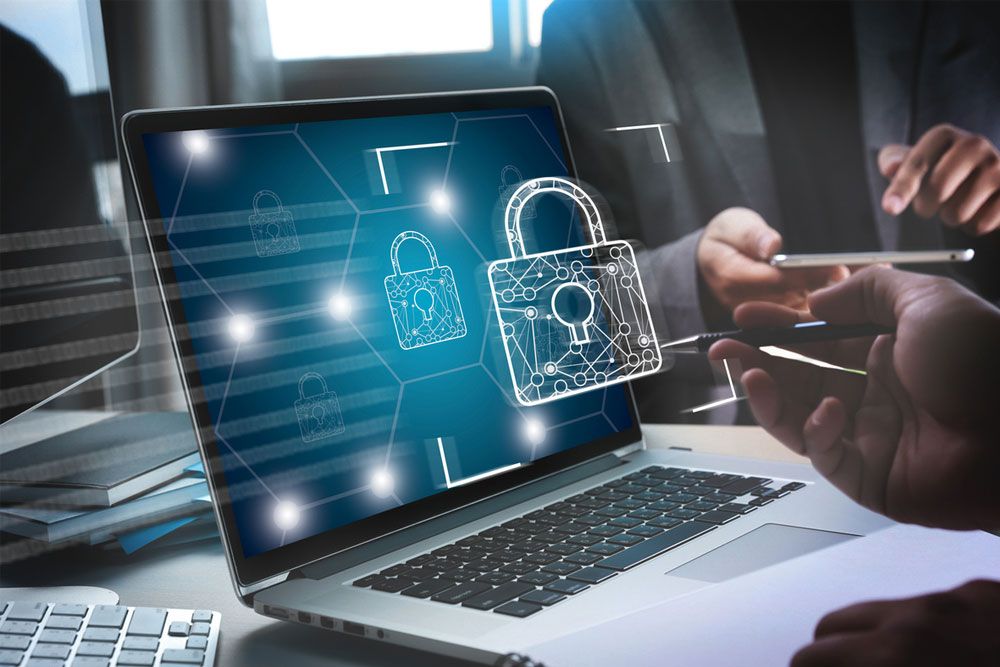Businesses, in most industries today, rely on the Internet and technology to complete tasks. Because of this practice, organizations end up sharing their confidential data in cloud facilities. Although this extensive digital transformation increases their productivity and efficiency, it also exposes organizations to cyber attacks. Such unethical threats can leak critical client information and cause losses for businesses. Fortunately, many cloud security practices and general cybersecurity awareness training can protect businesses from online infiltrations.
1. Using Multi-Factor Authentication (MFA)
Adopting a checklist-based, step-by-step approach lets businesses streamline their data security framework. Among the first things for businesses to tick off such a cybersecurity compliance checklist is to include MFA in their networks and devices. MFA makes it necessary for users to input two or more confidential or biometric information to verify their identity and successfully log into a work laptop or a centralized information drive. For example, certain MFA systems may ask users to use a password, a One-Time Password (OTP), and a fingerprint-based unlock to access critical business documents or systems. This prevents hackers and other cybercriminals from accessing these entities even if they know the password or OTP.
MFA reduces the risk of unauthorized access to sensitive information for businesses. That is why it is even more vital in today’s age of remote work.
2. Employing firewall-based security for internet connections
Cybercriminals deploy several kinds of data security attacks through the Internet or by accessing private business networks. Installing a firewall allows organizations to nullify such attacks before they impact their servers and devices. A firewall is a tool that protects computer networks from unauthorized external access and malicious traffic. This tool continuously monitors and regulates incoming and outgoing traffic across business networks.
Moreover, firewalls are effective in dealing with spam and phishing-based security threats. These tools come with features like phishing email detection and remote work threat management. For business employees working from home, installing a firewall in their home network can prevent malicious entities from causing damage to their devices and their work data.
3. Instituting a zero-trust security model
One of the most necessary network security fundamentals for organizations is the zero-trust security model. By following this model, every employee in a business needs to assume that no entity (internal or external) can be trusted by default.
Some key principles of such a model include-
- Strict identity authentication and authorization of every user, component, and device before letting them access business data.
- Granting users access only to the data, applications, and services they need (as per their designation and role).
- Continuous verification of all users in a business data network.
- Continuous collection of context-based data to make effective and accurate security and response decisions.
- Limiting the “blast radius,” or the damage caused by a cyber-attack on the business network.
Zero-trust security models prioritize data-centric security over location-centric network protection to prevent unauthorized access to business networks for cyber-attackers. The fundamentals of this model need to be taught to business resources as a part of their periodic cybersecurity awareness training initiatives.
4. Backing up critical business data
Cyber-attacks usually tend to dent the data storage architecture of businesses. This data may include vital information about employees and clients and key information about work projects. Businesses cannot afford to lose their data, so, backing up their data drives is an effective way to secure their information online in case of a potential cyber-attack.
Data security professionals advise companies to use multiple backup methods, including daily incremental backups to quarterly and yearly server backups. From time to time, businesses need to check this backed-up data, inspect its functionality, and evaluate how it can be restored later when needed.
5. Creating a robust incident response strategy
Perpetual data backup needs to be used in combination with other network security practices for maximum effectiveness and protection. One such practice that is critical for any company’s cybersecurity risk assessment is the creation of an incident response strategy. For example, when a cyber-attack strikes portable work devices, a key part of any incident response plan should include disconnecting them from the main business server or network to prevent data theft and damage to connected digital entities. In this way, continuous data backup and response strategy in tandem form one of the cloud security best practices.
6. Encrypting sensitive data
Multiple data encryption methods exist to keep sensitive information from entities that should not access it. Through managed cybersecurity services, businesses can encrypt their data when it is “at rest” (when it is lying unused on a device or server) or “in transit” (when it is being transported between devices or servers). Encrypting data is equivalent to adding another layer of protection atop an MFA system to prevent unauthorized data access even further in business networks.
7. Ensuring proper password management
A frequently overlooked part of ransomware attack prevention and cybersecurity awareness training is the use of password management. Companies need to train their employees to use difficult-to-guess passwords to lock their devices and confidential data files. There are many kinds of password management tools that can assist such employees with safely storing these passwords and using them later whenever necessary.
Employees need to be encouraged to change their passwords every 3 to 4 months to always stay ahead of malicious elements that may cause damage to their data networks and personal work devices. Proper password management forms a core component of any organization’s cybersecurity compliance checklist today.
